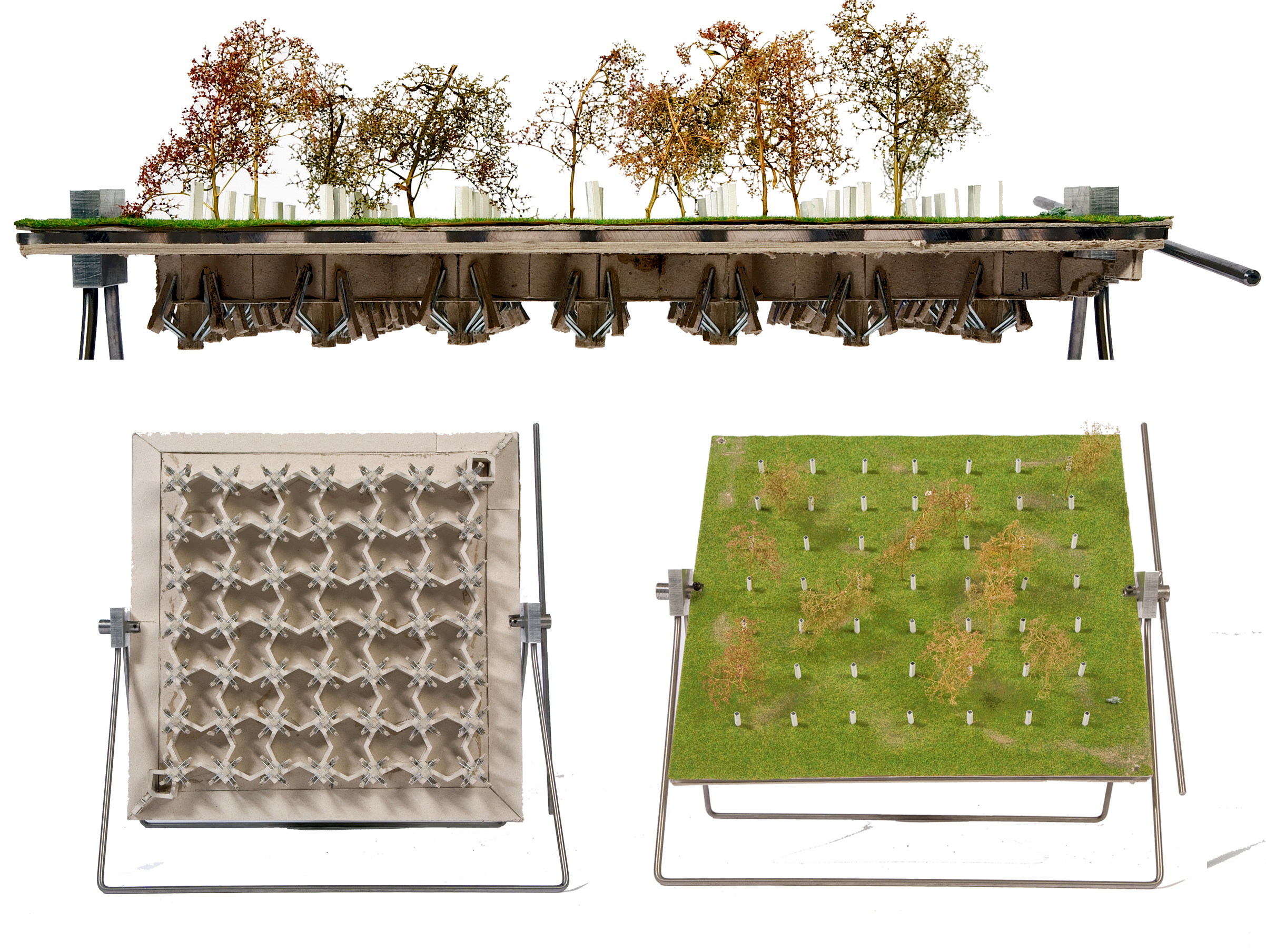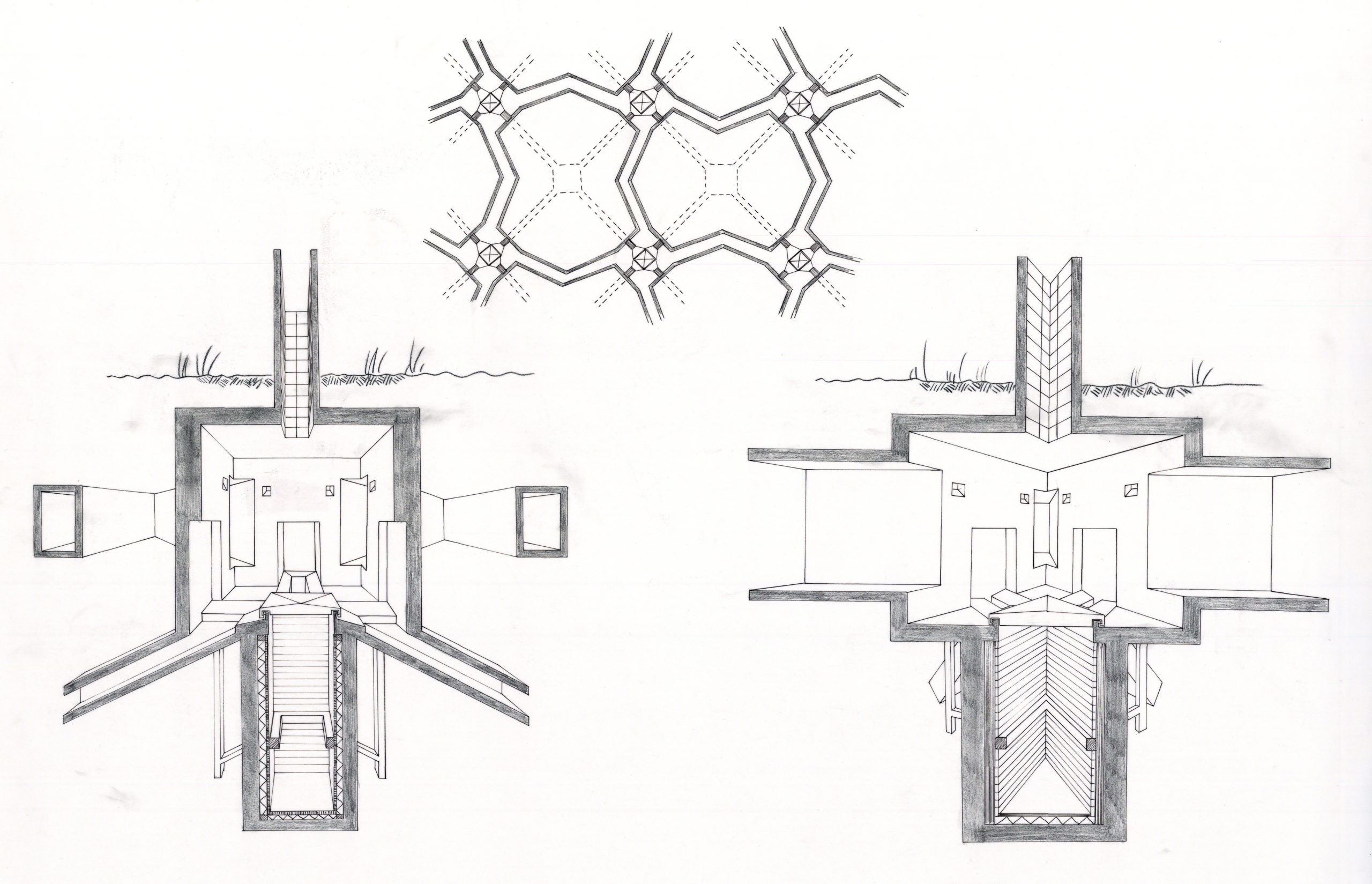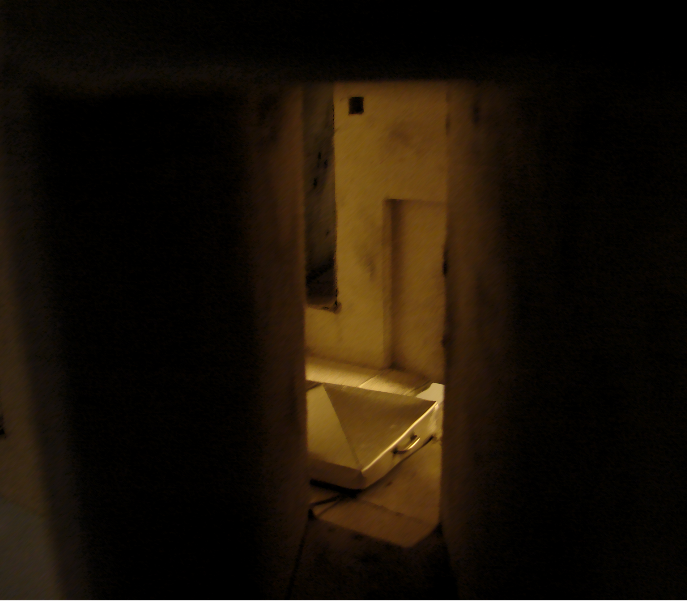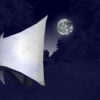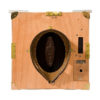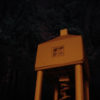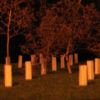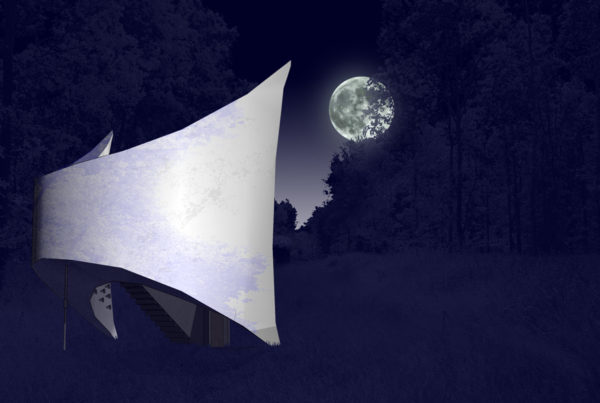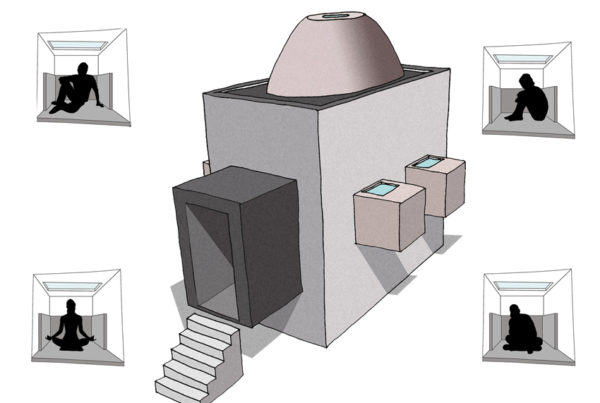This project came about when I visited Kaliningrad (Russia) where I was confronted with the many bunkers and underground buildings which accommodate subcultures of vagabonds, addicts, the homeless and other outcasts. During the day, in these seemingly deserted places, one can find visible traces which betray the unseen underground or nocturnal activities. These figures exist outside the normal grid and are daily confronted with the struggle of finding a safe sleeping place. This design is about the marginalized and addresses the nocturnal roaming of finding a place to dwell.
The noctural roaming is represented by the underground network of dwelling units. These units contain three levels: an above the ground light shaft, an underground cube and a sleeping shaft underneath. At the four corners of the cube the units are connected by fractured tunnels making the direct vision between the units impossible.
Within the cube one finds 4 shafts for the deposit of waste and faeces. In the middle of the cube there is a hatch that leads to the 2,5m deep sleeping space, which can be closed off from the inside. The units are multiplied and connected with fractured tunnels and thus giving the impression to the feeble minded of moving in circles. The only light source are the light shafts which are clad with mirrors on the inside. In order to avoid confrontation the wanderers of the underground network have to trust on their hearing.
”This design is about the marginalized and addresses the nocturnal roaming of finding a place to dwell.
Within these units the outcasts can roam freely and appropriate a sleeping unit. In extreme situations the dweller will attain these places forever and will become entombed. After the sleeping units and the waste shaft are full and the stench is unbearable, there will be less visitors and the entry will be closed off with leaves and rubbish. The underground network will then become inaccessible, so that only the rigid light shafts survive as a reminder of the underlying marginal world, the city refused. It then becomes a graveyard for the repressed inhabitants who longed to dwell.




